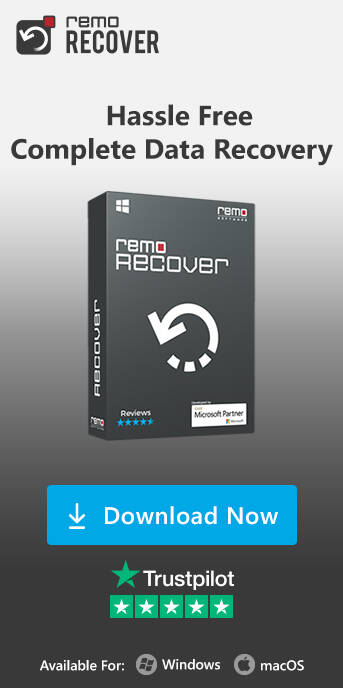What is DiskPart?
DiskPart is a command-line utility included in Microsoft Windows Operating Systems that allows users to manage disks, partitions, and volumes with precision and control. It provides a versatile set of commands for disk-related tasks and is particularly useful for system administrators, IT professionals, and power users who need to perform advanced disk management operations.
How to Access DiskPart?
To access DiskPart, follow these simple steps:
- Open Command Prompt: Press Win + R, type cmd, and hit Enter.
- Run as Administrator: Right-click on Command Prompt and select "Run as Administrator" to ensure you have the necessary privileges.
- Launch DiskPart: In the Command Prompt, type diskpart and press Enter. You will now enter the DiskPart environment.
All About DiskPart Command
Once you're in the DiskPart environment, you can use its commands to manage your disks. To get a list of available commands, type help and press Enter. This will provide you with a comprehensive list of DiskPart commands and their descriptions.
List of DiskPart Commands
DiskPart offers numerous commands, each serving a specific purpose. Some commonly used commands include:
- List Disks: This command lists all the drives connected to the system, allowing the user to obtain complete details about the drives.
- Select Disk n: Use this command to select the destination disk where the image will be stored. (n represents the disk number to be selected)
- Detail Disk: This command will provide more information if the user is unsure about the selected disk.
- List Volume: This command lists your selected disk's volume(s).
- Select Volume n: Select the volume to store the image. (n represents the volume number to be selected.)
- Delete Partition: This command deletes the partition with a focus on the basic disk. (Note: The system partition, boot partition, or any partition that contains the active paging file or crash dump cannot be deleted)
- Clean: This command removes any and all partition or volume formatting from the disk.
- Exit: To exit DiskPart while keeping the prompt open.
Disk Management with DiskPart
DiskPart offers a wide range of disk management capabilities. Here are some common tasks you can accomplish with DiskPart:
- Creating and Deleting Partitions: You can use DiskPart to create or delete new partitions. For example, you can use the command create partition primary to create a new primary partition. To delete a partition, use the delete partition command.
- Formatting Disks and Partitions: Formatting a disk or partition is crucial in preparing it for use. DiskPart allows you to format disks and partitions using various file systems, including NTFS and FAT32. To format a partition, use the format command.
- Assigning Drive Letters: DiskPart enables you to assign or change drive letters for partitions. This is particularly useful when you want to customize the drive letter associated with a specific partition.
- Advanced DiskPart Features: While DiskPart's basic functionalities are essential, it also offers advanced features that can streamline your disk management tasks.
- Automating DiskPart Tasks: You can create scripts to automate repetitive disk management tasks using DiskPart. This can save time and ensure consistency in your operations.
- Extending and Shrinking Partitions: DiskPart allows you to extend or shrink partitions, even the system partition, without needing third-party software. This is useful for adjusting partition sizes to meet your storage needs.
- Managing Volumes: With DiskPart, you can manage volumes, including mounting and dismounting them. This level of control is valuable for handling data storage efficiently.
Common DiskPart Errors and Troubleshooting
DiskPart is a powerful tool, but errors can occur. Common issues include disk access problems, incorrect commands, and permissions. Be sure to troubleshoot any issues carefully to avoid data loss.
- Security Considerations: When using DiskPart, be mindful of security. Ensure you have appropriate permissions, and avoid using them on critical system disks without proper backup and recovery plans.
- Backup and Recovery: Always have a backup strategy when performing disk operations. Regular backups can save you from potential data disasters.
- Alternative Disk Management Tools: While DiskPart is a robust tool, alternative disk management utilities are available, such as Disk Management in the Windows GUI.
Real Scenarios When Diskpart Can Come Handy
Let's explore some real-world scenarios where DiskPart can be incredibly useful:
- Resizing Partitions: You can use DiskPart to expand the storage space of your C: drive without reinstalling Windows.
- Partition Cleanup: DiskPart can help remove unnecessary partitions created during system installations.
- Data Recovery: In some cases, DiskPart can assist in recovering lost partitions and data.
Tips for Efficient DiskPart Usage
To make the most of DiskPart, here are some tips:
- Double-check your commands before executing them, as disk operations can be irreversible.
- Create backups before making significant changes to disks or partitions.
- Be cautious when using the clean command, as it can delete all data on a disk.
Note: If it's too late and you have lost data from your disk, you can use professional data recovery software like Remo Recover to easily retrieve the lost data.
Conclusion
DiskPart is a versatile command-line utility that can help you manage your disks, partitions, and volumes efficiently. By following best practices, exercising caution, and understanding its capabilities, you can harness the power of DiskPart to take control of your storage devices.
